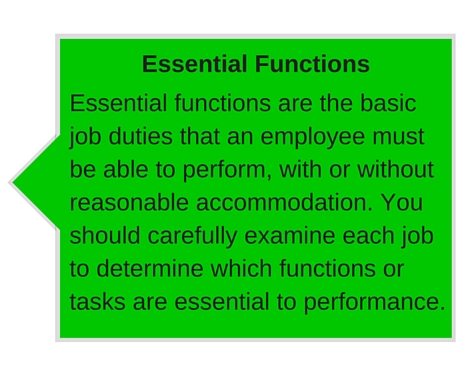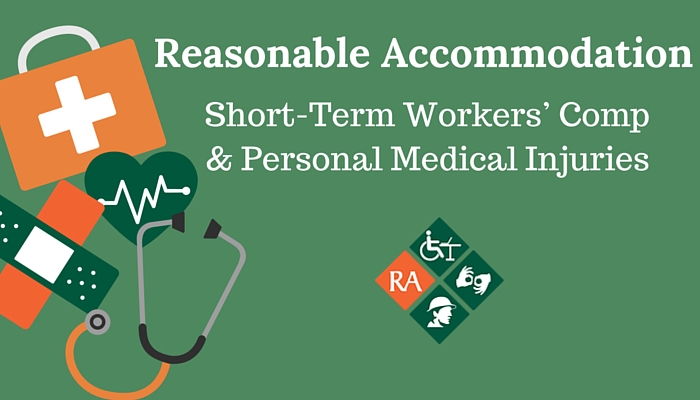Does the reasonable accommodation process apply to short-term work comp or personal medical injuries?
This is a loaded question so let’s break it into 3 parts to better understand what is being asked:
First, we will start with a review of the standard process for responding to a request for reasonable accommodation.
Once the request is received, the person managing the request moves the individual through the process of documenting the request, medically qualifying the individual (if need be), engaging in the ongoing interactive process, identifying an effective accommodation and moving to eventual resolution of the request. Along the way, should the worker not be medically qualified, the process could be relatively short-lived. But if the accommodation is both needed and effective, it could last the entire life of the individual’s employment with the company.
Second, Under ADA – Title I, the source of the impairment is NOT relevant.
One of the little known or often misunderstood facts about Title I of the amended Americans with Disabilities Act is that the origin or source of impairment that leads to a qualifying disability is irrelevant. It does not matter if the impairment arose from an accident at work, an accident of birth, or a leisure time activity. A disability resulting from an impairment related to a workers’ compensation injury is no more or less in need of careful management under Title I than is an accident of birth.
Now that we have talked about the standard process for handling reasonable accommodation requests and the source of the impairment, how does this process relate to long and short-term requests?
Title I of the ADA does not classify a request for reasonable accommodation as being long-term or short-term. The focus is on removing the barrier to effective work that is being experienced by the individual.
Having said this, some requests for accommodation benefit from the concept of “Temporary Alternative Duty (TAD).” The umbrella of TAD covers the temporary removal of an essential function from a specific worker’s list of duties for a specified length of time. Not to be confused with a trial accommodation which may become permanent, it is important to document and communicate that this is a temporary solution being accomplished by reassignment of the essential function.
One can see how the Temporary Alternative label can be useful in a situation requiring a brief change in scheduling for disability-related appointments. In this case the label of Temporary Alternative Duty should be documented with the purpose, the beginning date, and the end date of the accommodation. In some cases it may be useful to schedule a follow-up meeting to discuss the outcome and effectiveness of the temporary accommodation.
Labeling an accommodation as a temporary alternative gives the worker and the staff the flexibility to explore ways to remove a short-term barrier to continued effective employment. The key to any successful accommodation program is communication between the parties.
Don’t let accommodation management overwhelm you. Reasonable Accommodation Managment Software (RAMS) can help. Click here to learn more.



